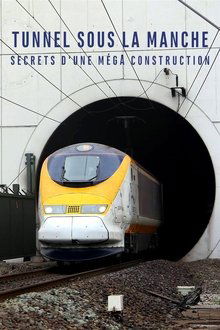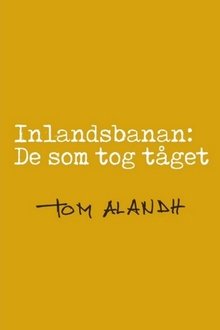An audio-visual essay, which reflects upon & compares metro systems around the world. It is an exploration of a world inside the world as well as feelings, fascination, obsession, fear and themes - of survival, control & silence.
Related Movies

New York Underground (1997)
In the mid 1800s, New York City was one of the most crowded places on earth. The congested streets and pokey transportation system were a source of constant complaint. On March 24, 1900, ground was broken for the Big Apple's subway; the Interborough Rapid Transit Line opened four years later, running more than 26 miles of underground track at the speed of 35 miles per hour. Soon thousands in the city were "doing the subway."

The Arrival of a Train at La Ciotat (1896)
A group of people are standing along the platform of a railway station in La Ciotat, waiting for a train. One is seen coming, at some distance, and eventually stops at the platform. Doors of the railway-cars open and attendants help passengers off and on. Popular legend has it that, when this film was shown, the first-night audience fled the café in terror, fearing being run over by the "approaching" train. This legend has since been identified as promotional embellishment, though there is evidence to suggest that people were astounded at the capabilities of the Lumières' cinématographe.

Berlin: Symphony of a Great City (1927)
A day in the city of Berlin, which experienced an industrial boom in the 1920s, and still provides an insight into the living and working conditions at that time. Germany had just recovered a little from the worst consequences of the First World War, the great economic crisis was still a few years away and Hitler was not yet an issue at the time.

Off the Rails (2016)
The remarkable true story of Darius McCollum, a man with Asperger's syndrome whose overwhelming love of transit has landed him in jail 32 times for the criminal impersonation of NYC subway drivers, conductors, token booth clerks, and track repairmen.

Wish Us Luck (2013)
A one-month-journey of twin sisters from London back to their home, Bangkok, by train. They traveled via the famous trans-Siberian route through many countries such as Germany, Russia, Mongolia and China, with many stories to tell.

Alltagsgeschichte – Treffpunkt U-Bahn (1993)
Ignaz Wuzel and Gerhard Jeschko are regulars at the espresso in the Südtiroler Platz underground station. Warden Leopold Prinz knows the problems of the children from Karlsplatz. In 1993, Elizabeth T. Spira filmed people on the Vienna subway network. Above all, it is the desperate, the lost and the forgotten who find refuge and a home in and around the subway.

Building the Channel Tunnel (2019)
The Channel Tunnel linking Britain with France is one of the seven wonders of the modern world but what did it take to build the longest undersea tunnel ever constructed? We hear from the men and women, who built this engineering marvel. Massive tunnel boring machines gnawed their way through rock and chalk, digging not one tunnel but three; two rail tunnels and a service tunnel. This was a project that would be privately financed; not a penny of public money would be spent on the tunnel. Business would have to put up all the money and take all the risks. This was also a project that was blighted by flood, fire, tragic loss of life and financial bust ups. Today, it stands as an engineering triumph and a testament to what can be achieved when two nations, Britain and France put aside their historic differences and work together.

New York Underground (2003)
Profiles the culture, lifestyles, and rituals within the New York City subways.

Rocky Mountain Express (2011)
A history of the nation's first transcontinental railway accompanies a steam-train ride through the Canadian Rockies.

The End of the Line (1959)
This documentary short offers a nostalgic look at the steam locomotive as it passes from reality to history. In its heyday, the big smoke-belching steam engine seemed immortal. Now, powerful and efficient diesels are pushing the old coal-burning locomotives to the sidelines, and the lonely echo of their whistles may soon be a thing of the past.

The Flying Scotsman: A Rail Romance (2013)
Built in 1923, the Flying Scotsman was the first steam locomotive to run at 100 miles an hour and to star in its own feature film. This is the untold story of the iconic Flying Scotsman-the very best in the engineering of its time.

RER B (2017)
Alice Diop's enchanting short film, a work of transcendent transformation, shows how the rough lines of Drancy station are immortalized in watercolor by the French artist Benoît Peyrucq. A tribute to a location fraught with historical and contemporary poignancy.

Dream City (1986)
This film is a portrait of New York in the 1980s by famed photographer Steven Siegel, including footage of the subways, the parks, Times Square and other neighborhoods. The film is narrated by teenagers of that era.

Inlandsbanan: De som tog tåget (1991)
A journey along the Inlandsbanan, from Mora to Gällivare, in the last summer of 1991 when the passenger traffic is to be shut down. A decision and its consequences. A film about the view of Norrland in these EC times.

Tickets s.v.p (1973)
An incident from the early days of Québec's quiet revolution, tailor-made for the cartoonist. It is the story of a Montréal commuter train, a unilingual ticket collector and a bilingual passenger. The passenger appears on screen himself to describe his bid to have tickets requested in French as well as in English. What ensued, and how even the railway president became involved, is illustrated with wit and humor.


